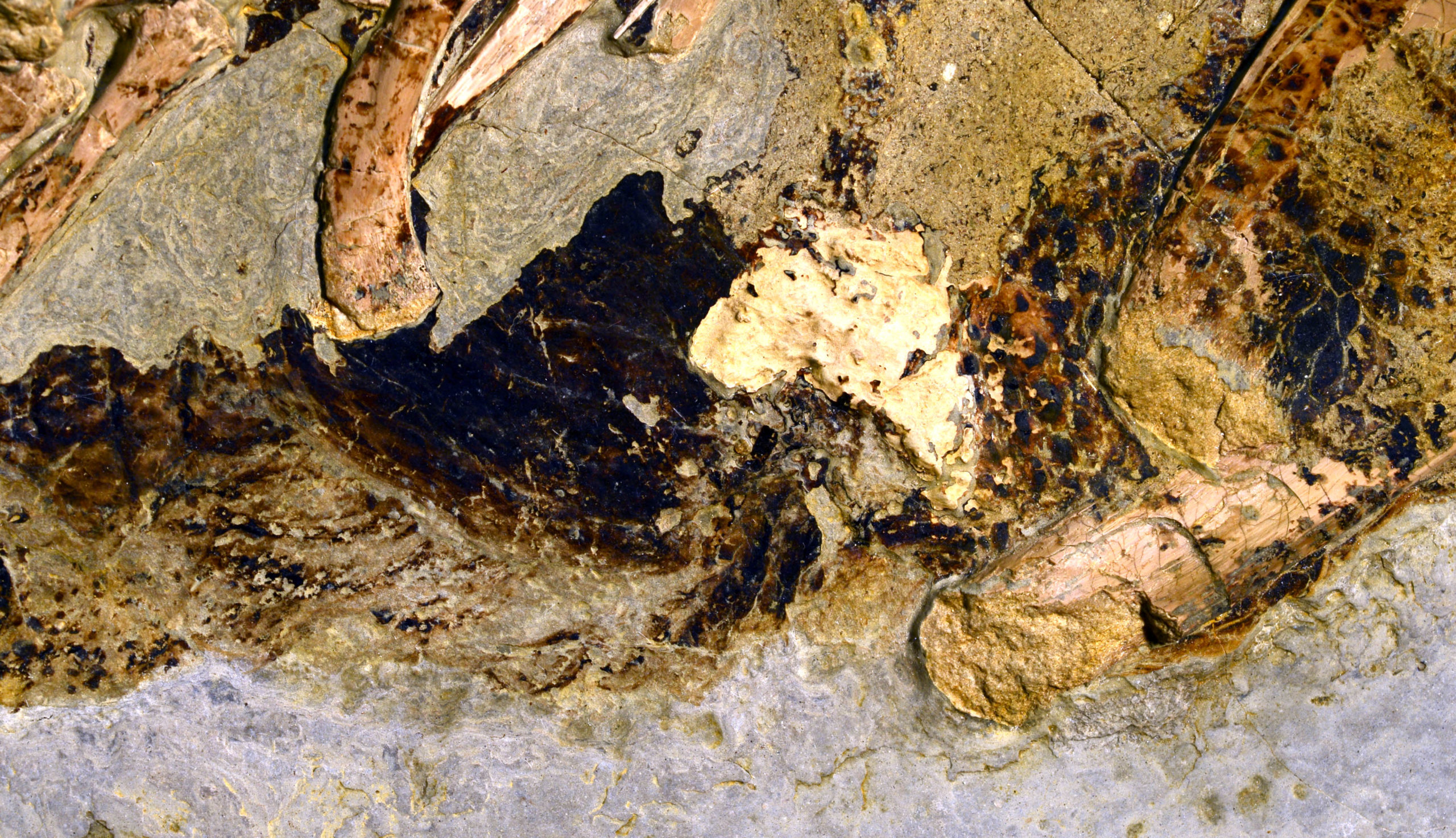Despite the huge number of dinosaur fossils found, from bones to feathers, precious little exists in the fossil record to explain dinosaur defecation, urination, or copulation. Thankfully, all three occasions happened in one place, and researchers have now achieved the first comprehensive look at the preserved exterior of a dinosaur cl f oaca.
This particular cloaca was found on a Psittacosaurus specimen, a Cretaceous dinosaur that looked like a cross between a parrot and a lizard (not coincidentally, that’s also what “Psittacosaurus” means). Excavated from Liaoning in northeast China, much of the dinosaur’s skin and external features were preserved, from a flourish of bristles sprouting from its tail to pigmentation around its enigmatic cloaca, giving researchers vivid sense of how the dinosaur may have looked in life. Their analysis of the rear orifice was published today in the journal Current Biology.
“All of the magic of a cloaca happens on the inside,” Jakob Vinther, a paleontologist at the University of Bristol and lead author of the recent paper, said in a video call. “The outside is quite nondescript, and then there’s all kinds of amazing stuff happening inside because it’s a multipurpose opening.”

Tantalisingly, only the exterior of the cloaca was preserved. The inside — at least in modern creatures — is where more unique evolutionary changes take shape, where dinosaur’s penises and clitorises, should they exist, would be found. (To the astonishment of this writer, a dinosaur penis has never been found). The remains are a stippled combination of black and burgundy, looking not unlike a cave painting out of Lascaux. There’s also a light tan splotch the researchers have identified as a coprolite: a dino poo that never saw the light of day.
Besides being fodder for many paleo-jokes, seeing the inside of a dinosaur cloaca would give a new understanding of dinosaur copulation. Without seeing the inside, it’s impossible to know whether dinosaurs mated with intromittent organs, as humans do, or if they participated in cloacal kissing, as many modern birds do, in which the male butts up his cloaca next to the female’s and ejaculates directly onto it.
The cloacal kiss is basically the birds “getting stuck with the whole system of getting sperm into the female in order to fertilise eggs” but finding another way about their business, according to study co-author Diane Kelly, a biologist specialising in sexual reproduction mechanisms at UMass Amherst. (Disclosure: Kelly previously wrote a column for Gizmodo called Throb, which was all about sex). Some birds — ostriches and ducks among them — do have sex with penises, so we know that both evolutionary techniques came from somewhere. But how did we get from dinosaur’s prehistoric holes to the modern bird cloaca? The Psittacosaurus specimen from Liaoning is our best glimpse to date.

If the vent of the cloaca is the most tantalising element of the fossil, its immediate vicinity raises even more questions. For one, the Psittacosaurus has melanated patterns around the cloaca — think of a baboon’s brilliant behind, though the dinosaur’s would have been black or rust-coloured. Also, the lobes on either side of the vent are swollen, suggesting glands that may have been used for olfactory signalling.
“We can make a couple of inferences about two possible ways that they could communicate with one another, which mirror methods that we see in living animals,” Kelly said in a phone call. “We’re not making that up just from whole cloth. Those are both modalities of signalling that we see in living animals, using the same region of the body as well.”
It’s impossible to know the exact functions of these cloacal features, but Vinther said signs point to sexual uses. Crocodilians have structurally similar cloacae externally, according to Kelly, but don’t have pigmented cloacae. The possibility of scent mechanisms does suggest that some dinosaurs might have sniffed each other’s rears, but there’s not much evidence to go on at the moment. It’ll take future fossil finds to figure out the interior structure of the system, and that’s where things will get really interesting. For now, we can relish a glimpse at the dinosaur cloaca, a one-stop-shop of evolutionary engineering that makes our own anatomy seem unnecessarily complicated.
“Mammals are the only ones that have separated these things out,” Vinther said. “We’re actually the weird ones.”
